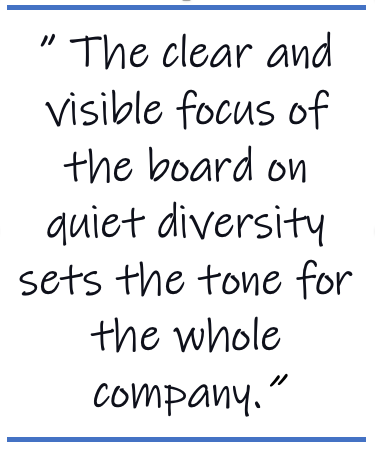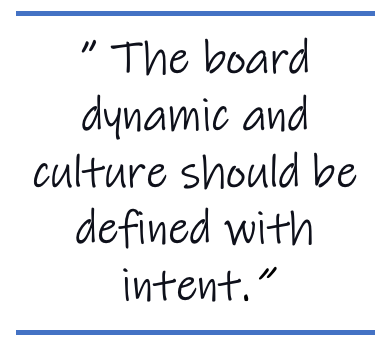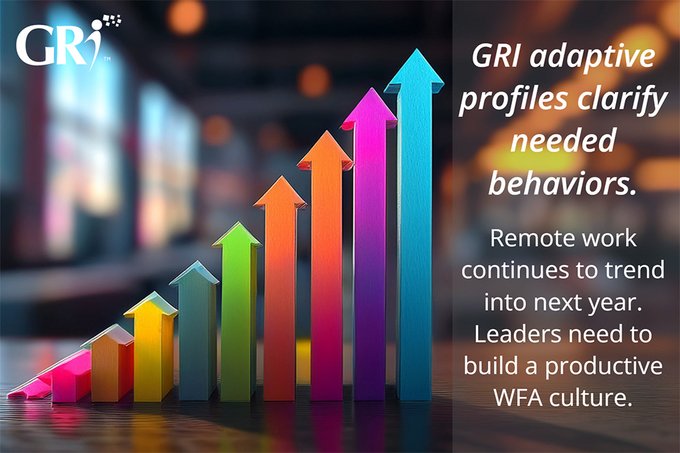Transforming Boards: Unleashing the Power of Quiet Diversity
Posted by Frederic Lucas-Conwell

Transforming Boards: Unleashing the Power of Quiet Diversity
Two years ago, a private company's board witnessed a historic shift, appointing a black woman as Chairperson—a groundbreaking move for diversity. However, despite the outward change, board dynamics remained stagnant, marked by routine and minimal debate. The Chairperson, seeking a transformative shift, aimed to infuse the board with fresh perspectives.
Steering away from the status quo, the nominations and governance committee strategically recruited candidates from diverse industries, cultures, ages, and life experiences.
Today, the board stands gender-equitable yet thrives on a tapestry of viewpoints, fostering lively and collaborative discussions. The company's performance has doubled, and board members actively contribute beyond meetings. Diversity has been on the corporate agenda since the 1960s [1]. An outgrowth of the civil rights movement, it has expanded from racial inclusion to include disabilities and LGBTQ+ rights, to name a few. The United Nations has defined thirty diversity characteristics ranging from race, gender, socioeconomic backgrounds, and religion to neurodiversity [2].
Yet, for most boards of directors, diversity is seen as the visible differences of individuals - gender, race, and physical.
By fixating only on visually observable diversity, organizations miss the performance enhancers that come from integrating different perspectives, cultural and socioeconomic backgrounds, beliefs, and career paths into decision-making. These non-observable characteristics are referred to as 'quiet diversity.'
Progressive boards and companies are increasingly inquiring about quiet diversity and how to operationalize it. Growth Resources Institute ("GRI") hosted a panel discussion during its annual global conference with seasoned public and private board members on quiet diversity's role in board success.
Many Dimensions of Diversity
Miller Adams, the co-founder and managing director of Pier 70 Ventures, emphasized that quiet diversity, at an individual level, is grounded in one's "presence in the room." Being in the board room, fully present, authentic, and bringing into conversations one's experiences, background, and perspectives is key to benefiting from quiet diversity.
Diversity of thought and perspective is essential to better decision-making, said Arthur Johnson, managing partner at Amara Investments. Interestingly, he pointed out that since companies serve diverse employee and customer bases, board members should seek and listen to all perspectives, not just those defined by gender and race.
Not actively seeking diverse perspectives and experiences has a price tag. Namely, it can impact company performance.
Mercedes De Luca, CIO at Pebble Beach Resorts, emphasized that point by sharing how her different cultural and socioeconomic backgrounds help the boards she's on not just to hear different perspectives but value them. Quiet diversity enriches the conversation and informs the questions asked.
Chris Shipley, panel moderator and a well-renowned journalist, author, and entrepreneur, summed up the impact of quiet diversity as "companies that have embraced diversity and have diverse leadership teams outperform."
The positive impact on performance from quiet diversity happens when people of all abilities participate in decision-making. Each panelist reiterated how essential - diversity of thought - is to board and company performance.
That path, however, is not always a smooth one. "Having a lot of different voices in the room, as painful as it can be sometimes, as slow as it could be sometimes, is ultimately the way things happen," shared Karen Roter Davis, Managing Partner at Entrada Ventures.
The ROI of Quiet Diversity
You won't find the ROI of quiet diversity on any routine board or management dashboard. The impact is cross-organizational, functional, and hierarchical. Measuring quiet diversity requires looking broadly at the organization, its resiliency, agility, and how well it operates.
Quiet diversity can lower recruitment costs and increase workforce quality, employee engagement, satisfaction, and retention. Product or service pricing is another area where quiet diversity impacts performance. Pricing and customer experience align with target customer expectations and value definitions, which increases sales and loyalty.

Interestingly, any mention of the typical DEI metrics—namely, inclusion metrics, organizational culture assessments, talent priorities, and employee surveys- was absent from the panel discussion [3]. That's not to say these are not important; they are. DEI metrics are one aspect, just as cash flow is another performance measure. Neither represents the whole picture of an organization's performance.
Progressive boards have started to include diversity as part of the operating rhythm of the business. The clear and visible focus of the board on quiet diversity sets the tone for the whole company. Arthur Johnson shared, "That (focus) tended to trickle down into the organization to put diversity more at the forefront as opposed to just talking about it."
As boards recognize the importance of quiet diversity, directors are getting more involved in their organizations. As part of the board's role to oversee management, progressive board members participate in workforce events to better understand employees' opinions on diversity and the progress the company is making.
There are several ways boards embrace and benefit from quiet diversity – nomination and governance, culture, communication, and technology.
Pathways to Board Diversity
The nominations and governance committee are critical to the overall functioning of the board. A board seat opening is an excellent opportunity to expand quiet diversity. The committee manages the process of bringing in new board members. While the committee does not select the final new board member, it is responsible for managing the search process.
Committee members can demonstrate quiet diversity inclusion through the questions they ask of the search firm, the recruitment process, and candidates. The questions reflect the characteristics of quiet diversity the board seeks and hopes to see in the company.

Boards usually use a skills matrix to manage all the different skills they need. For the matrix to be effective, it should include the characteristics of quiet diversity that will expand the board's perspective, such as socioeconomic background, doing business in different cultures, and education.
The goal is to improve communication and healthy working relationships. The best boards have created an environment where people feel comfortable, in and outside board meetings, to ask questions, share opinions, and raise concerns. These directors have invested in building relationships outside of board meetings to get to know their peers better, ask questions, and express their views.
That requires board members to be self-aware and responsible for ensuring everyone participates. The board dynamic and culture should be defined with intent. While the chairperson manages this, every director is responsible for managing conflict, balancing discussions so no person(s) dominates conversations and maintaining the appropriate tone to engage diverse perspectives actively.
Increasingly, boards and companies are investing in technology to help them understand how to better communicate and collaborate in this era of quiet diversity. Understanding someone's background and perspective is essential. Having the tools and insights into how best to approach a topic with a specific peer is invaluable to the success – of the work product, relationship, and organization.
Behavioral analytics and assessments can help people understand how to work with quiet diversity characteristics. They bring people together to learn how best to make decisions and communicate. By understanding the profiles of peers, one can communicate more effectively because you know what motivates the other individual and what they need to be successful.
These insights are foundational to leading collaborative cultures. Quiet diversity in boards and management teams helps to challenge our intuition. It can dramatically improve the quality of decision-making and boost company performance.
References
- [1] The Evolution of Diversity in the Workplace. StratX-ExL, John Wills. August 2023
- [2] What diversity really means, and why it’s crucial in the workplace. Better-up, Allaya Cooks-Campbell. May 2023.
- [3] The ROI of Inclusion: How to Align Diversity, Equity, and Inclusion (DEI) and Business Results. The Conference Board, Laura Sabattini, Patti P. Phillips. April 2021.
The article was first published on LinkedIn here.
It was written by Frederic Lucas-Conwell, who is the President & Founder of GRI - the Growth Resources Institute. Frederic is an author, researcher, speaker, and serial entrepreneur. For the past 35 years, he has trained and coached executives and HR leaders and consulted for Fortune 500 companies, privately held companies, and startups in leadership and organizational development. Frederic holds a Master's degree in Mechanical Engineering and a Ph.D. in Organizational Behavior with honors from Paris Dauphine University–PSL.
Please contact us today at contact@gri.co to learn more about how the GRI can work for you and your company. To receive our newsletter, subscribe here.
Latest Articles
Groupama Successful Transformation in Romania: The GRI, Catalyst for Profound Change
The history of Groupama in Romania is an eloquent testament to resilience, strategic vision, and the transformative impact of innovative management tools. Arriving at the...
Hybrid Work: A Management Revolution
The COVID-19 pandemic has acted as an unprecedented catalyst, radically transforming our approach to work. What was once a marginal practice has become the norm for many...
Leadership 3.0: Objective Insights for People-Centric Leaders
Steve, a brilliant entrepreneur, poured his heart into his work. His team at "Innovatech" was on the brink of a major breakthrough, a new app that promised to revolutionize...



